|
Hello readers and welcome back to the Hometown Heritage Blog!
Today I have some news for all of you: this will be my last blog post for Hometown Heritage. Tomorrow, June 15th, will be my last day here. If you want to come and see me at the Carnegie, then tomorrow is the day to do it! I am starting a new chapter in my life and will be applying to graduate school to get a degree in Museum Studies. My hope is one day to work in a Museum with its collection. Hometown Heritage has taught me many valuable lessons and I am very thankful for my time here. I also want to thank all of you, readers, for coming back every week to read these posts! I am glad that I was able to entertain you every week with fun stories and pictures from our collection. However, just because I am leaving does not mean that the blog will stop. Our newest hire here at Hometown Heritage will continue the blog, and more new and interesting stories and pictures from our collection will continue to be told. So again, thank you for coming back each week during these two years, and come back soon for another Hometown Heritage blog! P.S. This is Bill Clark with my own addition to this week’s blog. We are grateful for the many valuable contributions that Jared has made in his time with us at Hometown Heritage. His future is bright and I am confident of his success going forward. We are grateful to have played a small part in his career development. His blogs will be a “tough act” to follow for anyone. Best regards Jared!! Bill Clark and all the Trustee Board
0 Comments
Hello readers and welcome back to the Hometown Heritage blog!
If you have not figured it out from the heat these past few days, June is here in full force! Of course, the heat isn’t the only thing that June brings: it also starts the season of summer blockbusters. Perhaps some of you have already gone to see some, such as Wonder Woman, at the Grand 3 Theatre. However, did you know that in the early 1900s the Grand 3 was not a theatre and that there were actually two different competing theatres in Perry? Years before it became what we frequent today, the Grand 3 Theatre in Perry was an entirely different form of entertainment. Perhaps you have noticed that the main screen at the Grand 3 has a different feel to it than the other screens. There are balconies on either side of the screen and there used to be an elaborate frame around the screen with busts above it. There even used to be a stage that extended out into the room! What do these lead you to believe the theatre used to be? If you guessed Opera House, you would be right! When it first opened in November 1903, the Grand 3 Theatre was actually the Grand Opera House. We do not have any pictures of the inside of the building when it was an Opera House, but one can assume that the balconies were once functional, with wealthy citizens sitting in them to watch the show. Although, come to think of it, I used to work at the Theatre and I never found a way to access those balconies, so maybe they were always just decorations! Now, although the Grand 3 Theatre was not always used to show movies, there were two other places in Perry one could go to see the moving pictures. Opening around 1910, these two theatres were the Rex Theatre and the Majestic Theatre. The Rex Theatre, as I understand it, was just down the street from the Grand Opera House on the corner of Second and Lucinda. The Majestic Theatre, on the other hand, was farther down Second Street, closer to the Carnegie Library (in fact it looks like it used to be in the building where the Shoppe of Oddities is now). In fact, according to our collection there used to be a third theatre called “Foxy Theatre”, but I can only find one reference to it so I am unsure if it was an actual third theatre or a rebranding of one of the other two theatres. Still, with all these other theatres in town it makes me wonder why none of the rest of them survived. Did the Grand 3’s transition to a theatre drive the rest from town? Did the other theatres burn down in one of the numerous fires in Perry? If any of you readers know, tell us in the comments, and join us next week for another Hometown Heritage Blog! Hello readers and welcome back to the Hometown Heritage Blog!
Summer Break is finally upon us and with it comes bored kids looking for something to do. There are many activities that kids like to do to pass the time, including sports, video games, and playing with other toys. However, there is one summer activity that appears to be a long standing tradition for children everywhere: a summer reading program! It seems that the summer reading program has had a long history in Perry. The earliest photos in our collection that pertain to the summer reading program date back to 1966: 51 years ago! The photo showing two kids, Kay and Bobby Kidney, getting prizes from the librarian at the time, Louise Fullhart, for reading 30 books that summer. Another photo, this time from 1968, shows Louise Fullhart once again. This time she is with her husband, Frank Fullhart, who was there to tell the children stories about his railroad days. The interesting thing about this photo is that it is taken somewhere in the Carnegie Library which is, of course, our current home. However, although now the Children’s Room, or Room of Wonder, is upstairs, back in the 1960s it was moved downstairs to where the Courtroom is now. It looks quite different from this picture! Gone are the bookcases and curtains to be replaced with the current Courtroom furniture. It would have been interesting for me to see what the whole room looked like compared to now. It seems like the children of Perry have been enjoying a reading program for a long time, and they will continue to enjoy it in the years to come. In fact, the reading program for this summer starts soon with Kids Fest this weekend! Although it is hosted by the Perry Public Library, we will also be taking part in Kids Fest. Here at the Carnegie Library Museum kids will partake in a scavenger hunt to find some historic photos. Perhaps I’ll see you there readers, and come back next week for another Hometown Heritage blog! Hello Readers and welcome back to the Hometown Heritage Blog!
Since it is Memorial Day this weekend, I thought it would be a good idea to share another story about a veteran from our Oral History collection today. Leo-LaVonne Carr shares this story about learning code and the end of World War II: “[W]e lived in an apartment. We…five miles from where we worked and this lieutenant and his brother lived in the same apartment building so when they would call them they would run down and they’d get me and we’d go down to the signal corps and decode it you know. So the….very day before the day was over with the Japanese we decoded it and we got the message that five o’clock the next day the war would be over. So we had to make up messages to ever tributary all over the whole United States….the Marines, the Navy, the Army…the everything. But we couldn’t tell anybody. They locked us in there and we was in there all night and all day and even the girls that worked daytime, they couldn’t come to work. They had to go back home ‘cause we was getting all this stuff ready you know. And so at five o’clock that night we had all these empty tapes. We had the policemen were this way. The teletype…or telegraph company was this way and the fire station was this way and down below us was the radio station and we took empty tapes and we threw it out and we said the war was over. Well all those tapes got caught on the streetcars and the buses and the messages just went through just like that. Well then we sent the message to Fort Leonardwood and all the smaller places where they had the service guys and they stole the jeeps, knocked the fence down, stole the trucks, came to Saint Louis and you could buy booze in any drugstore and everybody got drunk and the roads were wider than this kitchen and by the time we got all the messages sent out and could go home all these people hanging on each other drunk, going up and down the street singing and then all the bands came to the big park right in the middle of Saint Louis town…the city of Saint Louis and they played and everybody was dancing. Everybody was drunk and I was dead on my butt.” It sounds like it was one of the biggest celebrations anyone has seen all over the country, but unfortunately for Leo he was too exhausted to join in! You hear a lot of similar stories about parties happening in the streets when the news was announced (and even a few famous pictures). Most of you readers are probably too young to remember the end of World War II, but do you have any other stories (or maybe stories from your parents and grandparents) about the end of different wars? Let us know in the comments, and join us next week for another Hometown Heritage blog! Hello readers and welcome back to the Hometown Heritage Blog!
Every day, we use cars to get to all the places that we need to go. Be it work, the store, home, or somewhere else, we all generally rely on cars to get us from point A to point B. With these vehicles comes the need to have somewhere to refuel them: gas stations! Nowadays, gas stations are everywhere, and most towns generally have more than one (unless you are Bouton, then you don’t even have one at all). This does raise a question, however. What were gas stations like when they were first appearing around the country? One of the earliest pictures of a gas station that I can find in our collection is on a postcard that dates back to about 1915. It shows the Rude Auto Station in Perry, with the old Fire Hall in the background. Although you cannot see any gas pumps in this picture, the description does talk about them. Rude Auto featured a new style of pump: the measuring machine and hose style. According to our system, this style replaced the old bucket and funnel style which I can only imagine worked in a similar way to how we fill up lawn mowers and other small machines today. Imagine how long it would take to fill a whole car tank (of today’s size) with that system! That’s probably why gas stations of the early 1900s had attendants who did that for you. Speaking of attendants, we have another photo in our collection that shows on such person! Dated to 1918, it is a picture of a man standing next to a pump at the Manhattan Oil Co. (at least, I think he is an attendant). Of course, his job here would be to fill up your car with gas from what I believe is an example of the measuring machine and hose style pump mentioned earlier in addition to possibly washing your windscreen and other minor things. Considering how inexpensive gasoline used to be (at least compared to today), I can’t imagine that he was paid very well for all the work he did! It makes me wonder when attendants stop being employed at gas stations and why the switch to self-serving was made. Perhaps it was due to gas stations wanting to earn more, or perhaps, newer pump systems were easier to use? Readers, do any of you know? Let us know in the comments, and join us next week for another Hometown Heritage Blog! 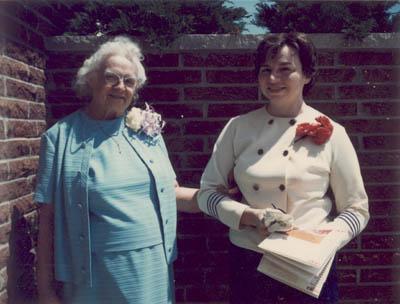 Hello readers and welcome back to the Hometown Heritage Blog! Today will be a special blog about a very important upcoming holiday: Mother’s Day! (You are welcome those who forgot, better go find a gift now!) Mother’s Day is, of course, a day to celebrate the mothers of the world. Surprisingly, here at Hometown Heritage we only have one picture that is listed under “Mother’s Day”. The picture is of Mary Anderson and her daughter Virginia Anderson O”Malley. It was taken on Mother’s Day back in 1970! Unfortunately, not much else is known of the specifics of this picture. It makes one wonder if Mother’s Day was as commercialized in 1970 as it is today. Did Virginia buy her mother a card and some flowers, or was it enough to simply spend the day with her? From the picture, it seems like they must have spent the day together somewhere but it is unknown where exactly the picture was taken. Looking at the photo, it makes me wonder why Virginia is holding a stack of paper in her hands. Could these be some kind of gift to her mother, or is it the other way around, something that her mother gave her? In either case, it is nice to see that they got to spend time together on Mother’s Day! What are you doing for Mother’s Day readers? Let us know in the comments, and join us next week for another Hometown Heritage Blog! Also, don’t forget that May 20th is the All About Bacon event! The number of tickets is limited, so make sure to come by and get some here at the Carnegie Library Museum while you can! Hello and welcome back to the Hometown Heritage blog!
This week I have an exciting event to tell you all about! Coming up on May 20th, Hometown Heritage will be presenting All About Bacon: A Historic Look at an Iconic Iowa Food. This event features presentations about the enlightening history of bacon in Iowa throughout the years given by Leo Landis. Leo is the Museum Curator at the State Historical Museum of Iowa and the Bacon Professor! As a group of presentations about the history of bacon, bacon breakfast burritos and bacon samples are also included. The samples are provided by Kitt's Locker in Dedham, and the Des Moines Bacon Company. The event starts at 8:30 A.M. and ends at 12:00 P.M. here at the Carnegie Library Museum in Perry, Iowa. Tickets are $25.00 each and are sold at the Carnegie Library Museum and at the Perry Chamber of Commerce. We hope to see all of you there! 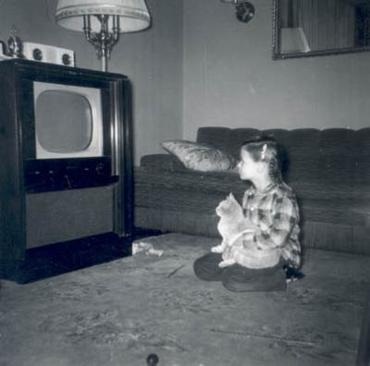 Hello readers and welcome back to the Hometown Heritage blog! When you woke up this morning, many of you probably turned on the television to catch the latest headlines and the traffic before heading out to work. Yet this morning routine was not always possible, as many of you probably know! The invention of television, and eventually color television, has changed quite a lot in our society. Although I cannot recall a time when there were not televisions, it is possible that many of you can. Before television everyone got their news (be it real or fake wars of the world) through radio. When the first TVs came along, they were small tube ones similar to the one shown in today’s picture. One constant through the years is that even back in the mid-1900s televisions were still quite costly. I remember hearing stories about how people would gather around their neighbor’s tiny television set, the only one on the block, in order to watch big events such as the Moon landing. It wouldn’t be long, however, until color televisions were invented and shortly thereafter became widespread. In hindsight, it really is impressive that over roughly 50 years television has become a staple in the American household and has had a massive effect on all of our lives. There are many ways that television has effected all of us, and I’m sure you readers can think of many! But did you know that apparently people only began to dream in color when color TVs were created? It is an interesting thing to think about, since we could see color long before a TV could display it. Why would we only start to dream in color then? Of course, not everyone does dream in color, so maybe people simple started to report it more. We may never know! Do you have any memories of television and how it impacted your life? Perhaps you can remember the first time your family got a TV? Let us know in the comments and come back next week for another Hometown Heritage blog! 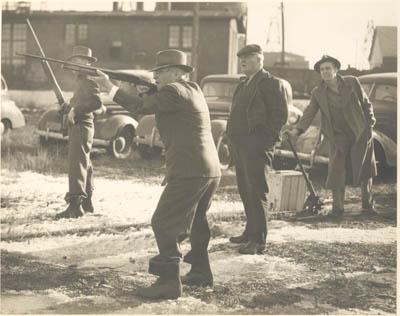 Hello readers and welcome back to the Hometown Heritage blog! As many of you know, Perry is a town that flourished because of the railroad. The railroad was so prevalent here that we have many photographs in our collection that show the trains, the tracks, and more. In fact, Perry used to have so many trains that came in and out of town that we had our own roundhouse! Although the number of roundhouses is not clear from our records, we do know that one roundhouse used to be located where the elementary school is currently. What is interesting about the roundhouse, however, is that it was not just used as a place to gather trains! Readers, do you have any guesses as to what else might have happened at the old roundhouse? If you guessed that people used to go skeet shooting at the roundhouse, then you would be right! According to the description of this photo, people would go out on Sundays and meet at the roundhouse where they would do some skeet shooting in the 1940s. What amazes me most about this is that guns were allowed so close to a place of work. If the shooters were fooling around too much, they could have injured one of the railroad workers! Perhaps this was allowed because the workers were not working during Sundays? Or maybe the railroad workers were in on it and allowed people to do this without the consent of the managers. It seems only someone who was there would know! In any case, it looks like this is what people would do for fun during the 1940s. Readers, what do you do for fun on the weekends? Let us know in the comments, and join us next week for another Hometown Heritage Blog! 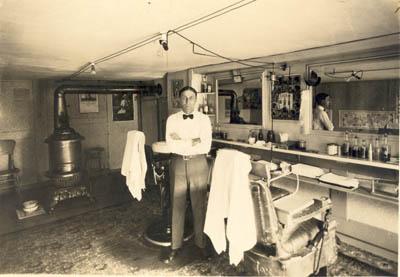 Hello readers and welcome back to the Hometown Heritage Blog! Inflation has affected many products over the years, some more obvious than others. Gasoline is a good example with prices averaging around $2.30 per gallon today. In decades past, they were as low as $.05 a gallon. However, there are some products and services that you may not realize have been affected by inflation! One such service is shown in today’s picture, barber services! This picture is of Jim Godown in his barbershop was taken in 1929. How much have the prices changed? You might be surprised to know! Back in 1929, around 100 years ago, a haircut was only $.25. According to an inflation calculator, if haircuts were the same price in 2017 it would only be $3.56! A shave was also significantly cheaper. In 1929, it was only $.10, which would only be $1.42 in 2017! Imagine walking into your local hair salon or barbershop and getting a haircut for less than the price of a meal at McDonalds. Of course, none of these numbers takes into account the rising costs of living expenses so it is unreasonable to think that we could return to the age of super cheap haircuts. The average price of a haircut in 2017 is $15, which means that at the 1929 price a single barber would have to do 5 times as many haircuts in a day just to make a living! Of course, if prices had stayed the same, I imagine getting a bad haircut would not be as much of a letdown since it was so cheap (you get what you pay for, after all). Have you ever gotten a bad haircut? Let us know in the comments, and join us next week for another Hometown Heritage Blog! |
Archives
March 2020
Categories
All
|
All Rights Reserved, Fullhart Carnegie Charitable Trust, 2014-2023
This website is possible with the support of the
Dallas County Foundation
This website is possible with the support of the
Dallas County Foundation

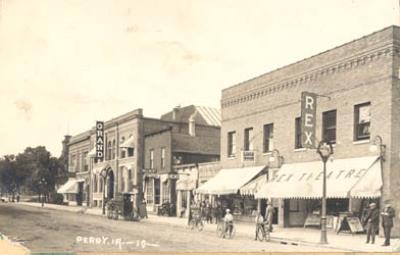
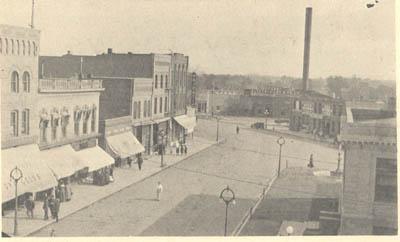
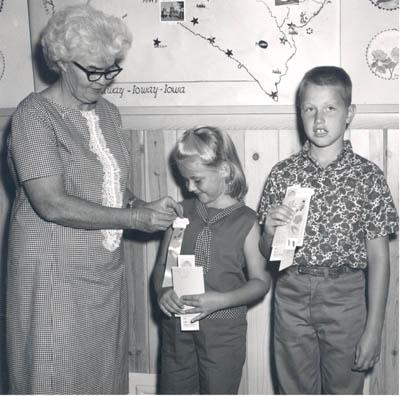
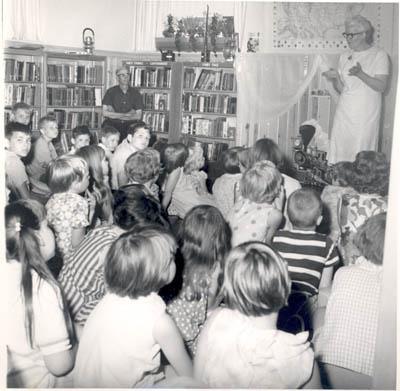
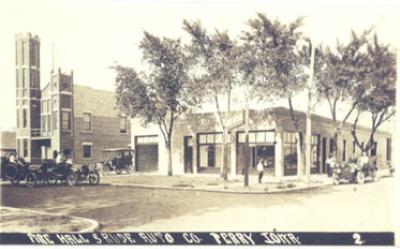
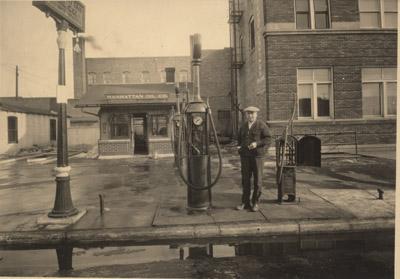
 RSS Feed
RSS Feed